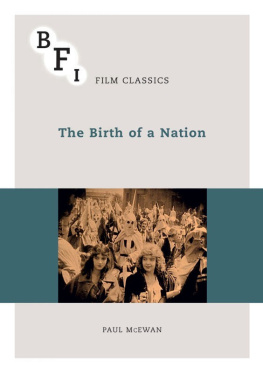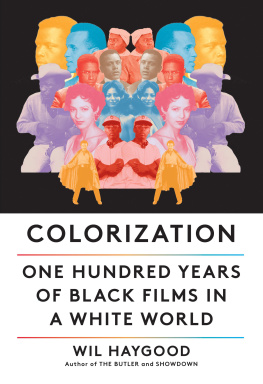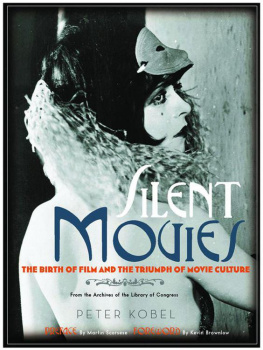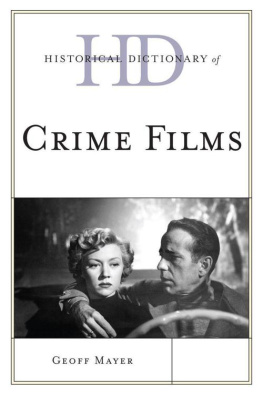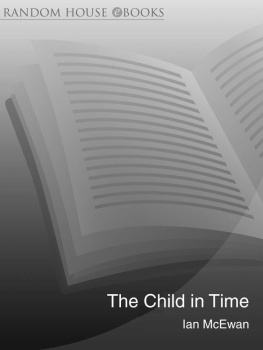BFI Film Classics
The BFI Film Classics is a series of books that introduces, interprets and celebrates landmarks of world cinema. Each volume offers an argument for the films classic status, together with discussion of its production and reception history, its place within a genre or national cinema, an account of its technical and aesthetic importance, and in many cases, the authors personal response to the film.
For a full list of titles available in the series, please visit our website:
Magnificently concentrated examples of flowing freeform critical poetry. Uncut
A formidable body of work collectively generating some fascinating insights into the evolution of cinema.
Times Higher Education Supplement
The series is a landmark in film criticism.
Quarterly Review of Film and Video
Possibly the most bountiful book series in the history of film criticism.
Jonathan Rosenbaum, Film Comment
Editorial Advisory Board
Geoff Andrew, British Film Institute
Edward Buscombe
William Germano, The Cooper Union for the Advancement of Science and Art
Lalitha Gopalan, University of Texas at Austin
Lee Grieveson, University College London
Nick James, Editor, Sight & Sound
Laura Mulvey, Birkbeck College, University of London
Alastair Phillips, University of Warwick
Dana Polan, New York University
B. Ruby Rich, University of California, Santa Cruz
Amy Villarejo, Cornell University
The Birth of a Nation
Paul McEwan


Paul McEwan 2015
All rights reserved. No reproduction, copy or transmission of this publication may be made without written permission. No portion of this publication may be reproduced, copied or transmitted save with written permission or in accordance with the provisions of the Copyright, Designs and Patents Act 1988, or under the terms of any licence permitting limited copying issued by the Copyright Licensing Agency, Saffron House, 610 Kirby Street, London EC1N 8TS. Any person who does any unauthorised act in relation to this publication may be liable to criminal prosecution and civil claims for damages.
The author has asserted his right to be identified as the author of this work in accordance with the Copyright, Designs and Patents Act 1988.
First published in 2015 by
PALGRAVE
on behalf of the
BRITISH FILM INSTITUTE
21 Stephen Street, London W1T 1LN
www.bfi.org.uk
Theres more to discover about film and television through the BFI. Our world-renowned archive, cinemas, festivals, films, publications and learning resources are here to inspire you.
Palgrave in the UK is an imprint of Macmillan Publishers Limited, registered in England, company number 785998, of 4 Crinan Street, London N1 9XW. Palgrave Macmillan in the US is a division of St Martins Press LLC, 175 Fifth Avenue, New York, NY 10010. Palgrave is a global imprint of the above companies and is represented throughout the world. Palgrave and Macmillan are registered trademarks in the United States, the United Kingdom, Europe and other countries.
Series cover design: Ashley Western
Series text design: ketchup/SE14
Images from The Birth of a Nation (D. W. Griffith, 1915), David W. Griffith Corporation/Epoch Producing Corporation
Set by Cambrian Typesetters, Camberley, Surrey
Printed in China
This book is printed on paper suitable for recycling and made from fully managed and sustained forest sources. Logging, pulping and manufacturing processes are expected to conform to the environmental regulations of the country of origin.
British Library Cataloguing-in-Publication Data
A catalogue record for this book is available from the British Library
A catalog record for this book is available from the Library of Congress
ISBN 9781844576579
Acknowledgments
This book would not exist in its present form without the extensive feedback of my students at Muhlenberg College, who have tolerated my over-interest in the film for a number of years, and whose thoughtfulness has repeatedly shaped my ideas and the books content. I am grateful to my Film History class of 2014, who read the manuscript, and particularly indebted to Katrina Faust and Francesca Fillis, who were patient and thorough proofreaders. I am also thankful to my colleague Roberta Meek for useful advice about the books design and perspective, and to Philippa Hudson for making innumerable improvements to the text. Sophie Contento from BFI/Palgrave was helpful from the proposal stage to final edits. Clearance for image rights was graciously supported by the Daniel J. and Carol Shiner Wilson Grant for the Completion of Scholarly Projects at Muhlenberg College.
Most of this book was written while on a research sabbatical from Muhlenberg in the fall of 2013, and I owe much to my colleagues, who have helped me carve out a place for writing and research amidst the daily pressures of working in a vibrant liberal arts college. My wife Eileen was my first editor and my sounding board. She and my children Grace and Max are a constant source of inspiration, as is my sister Nichola, a teacher and a crusader, to whom this book is dedicated.
Introduction: True as That Blade
In an introduction to The Birth of a Nation that was shot for the films re-release in 1930, D. W. Griffith sits for an awkward staged interview with the actor Walter Huston, who had recently starred in Griffiths Abraham Lincoln (1930). Huston gives Griffith a Confederate battle sword as a gift, and they discuss Griffiths most famous film. Huston asks Griffith if The Birth of a Nation is true, and Griffith initially replies true as that blade. Upon reflection, though, he softens a bit and says, Yes, I think its true but as Pontius Pilate said, Truth? What is the truth?
This is perhaps Griffiths most revealing moment in the history of his responses to The Birth of a Nation, and the only surviving public comment in which he expresses the slightest doubt that his film is anything less than the absolute historical truth. In 1915, he had written that it was based upon truth in every vital detail, a somewhat bizarre claim given that it is a work of historical fiction in which most of the primary characters are either made up or only loosely based on real figures. The Birth of a Nation had been adapted from a novel by Thomas Dixon, first published in 1905, and a subsequent stage play.
To modern viewers, The Birth of a Nation is sometimes incomprehensible. We expect that films created in the past will include stereotypical images of minorities, but a film in which the Ku Klux Klan are the heroes becomes more shocking with every passing decade. Many first-time viewers, especially younger ones, have trouble believing that such a film was ever made, let alone that it was incredibly popular.
Assessing the historical legacy of The Birth of a Nation requires grappling with a complex calculus of racism and art, a mixture that has created arguments and confounded viewers for the past century. The Birth of a Nation is, in the simplest terms, one of our cultures greatest artistic achievements and one of its most racist artefacts. Our temptation has long been to try to combine these two ideas by arithmetic in an attempt to determine whether the net result is positive or negative, or whether one simply cancels out the other. For much of its history, the impossibility of reconciling these two conflicting ideals has led otherwise well-intentioned people to simply ignore the racism, to try to set it aside so that they can consider the film as art unencumbered.
Next page
